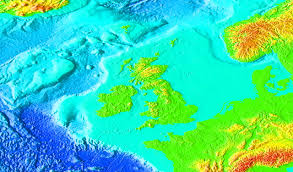
The year 2015 on the other hand will be much more dramatic for the UK than for Norway. The money spent will drop by more than 20%, and we will see the spend contract even more in 2016 before stabilizing at around BUSD 35 at the end of the decade, writes Audun M. Martinsen, Senior Analyst, Rystad Energy in a September letter.The Norwegian oil and gas sector is far from sheltered and is expected to decline in 2015 by about 9%
Double British Decline
In 2014 we saw more than USD 100 billion being directed to the development and production in NW Offshore Europe for the first time ever. This equates to an average 9% annual growth from 2009-2014 and was caused by more activity and higher unit costs in both Norway and the United Kingdom. Even with rising demand of oil and oil prices we do not expect the spending to grow to these levels for the rest of the years in this decade. Companies will conserve cash, focus on completion of existing projects and await the business outlook.
The Norwegian Shelf
In Norway, E&P companies spent about USD 51 billion in 2014, a 6% growth from 2013. The Norwegian oil and gas sector is far from sheltered and is expected to decline in 2015 by about 9%. Most of the decline is driven by capex cuts which will drop by 11%. The drop is an effect of a normalization of extraordinary activities from the 33 greenfield developments committed to between 2010 and 2013, such as Gudrun, Goliat, Eldfisk II. In addition, it is also the effect of cost cuttings and efficiency programs by Statoil. Statoil aims to reduce their MMO budget and increase the drilling efficiencies substantially.
Large uncertainty
Looking towards 2020 there are a lot of uncertainties in investment estimates, specifically regarding the sanctioning of new projects and exploration levels. For example, Statoil has pushed the final investment decision (FID) on both Johan Castberg and Snorre 2040 – both expected to be multi-billion dollar projects with new platforms (floaters); FID’s are now expected by H2 2017, with start-up around 2022-2023. With this current timeline, these projects are important to meet the forecasted 2020 expenditures of about USD 55 billion. Other key projects are Johan Sverdrup phase 1 and 2 and potential developments of the Skarfjell, Alta/Gohta and Pil discoveries. In the current forecast a relatively flat exploration capex at around USD 5-6 billion has been assumed from 2016 onwards after peaking at USD 7 billion in 2014.
British Shelf
The UK Continental Shelf (UKCS) was surpassed by the NCS to be the largest O&G market in 2006. In 2014 UK almost closed the gap with USD 46 billion expenditures on upstream activities. 2015 on the other hand will be much more dramatic for the UK than for Norway. The money spent will drop by more than 20%, and we will see the spend contract even more in 2016 before stabilizing at around BUSD 35 at the end of the decade. The reason for this immense drop is an extreme case of what we observed in Norway – record high oil prices and inflation led to massive investments and rejuvenation programs in old discoveries and fields. 58 greenfield investments started between 2010 and 2013 such as Clair Ridge, QUAD204 and Mariner. So when completion simultaneously occurs and investments stop, there are only a few new discoveries to be developed. The current field development boom observed at the NCS includes a healthy mixture of old discoveries having matured into economical projects and discoveries made over the last decade. Comparing discovered volumes at the NCS with the UKCS, pinpoints one of the key issues for the UKCS has been that exploration results have been persistently poor and on decline since activity peaked in 2007/08. In 2008, 121 wildcat and appraisal wells were drilled at the UKCS and 444 million boe of oil and gas were discovered. Since then the exploration activity has decreased and in 2014 only 38 exploration wells were drilled and only 98 million boe of oil and gas were discovered, writes Martinsen in the September letter from Rystad Energy.




